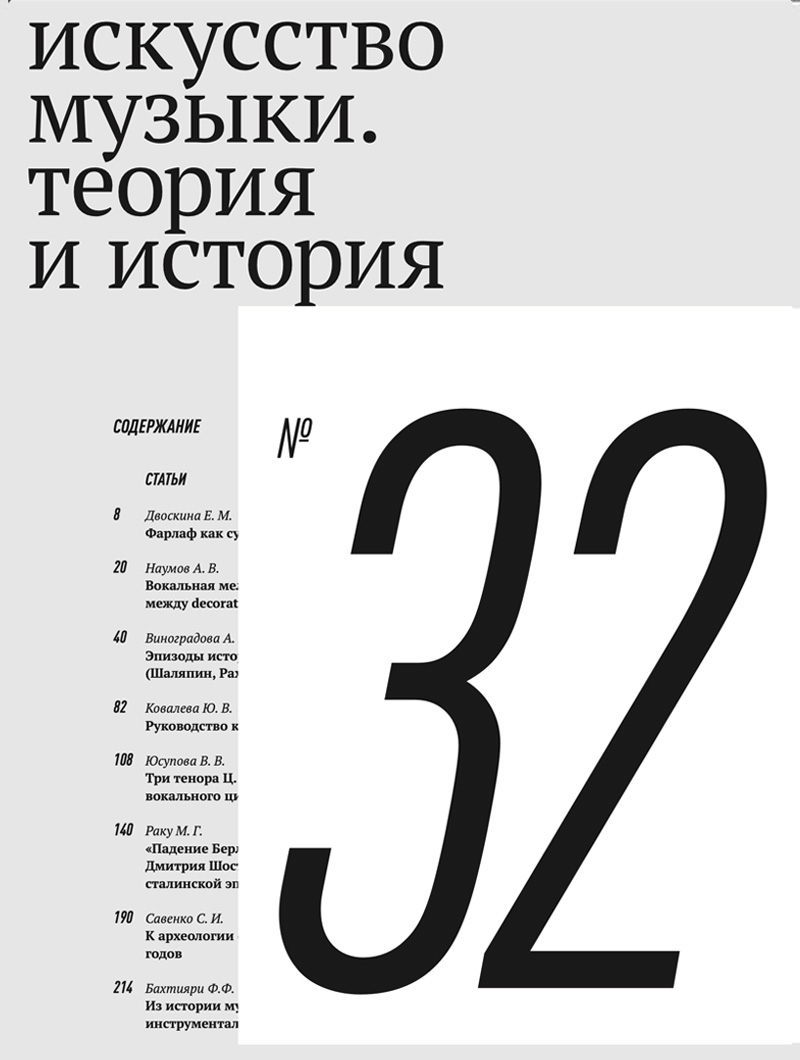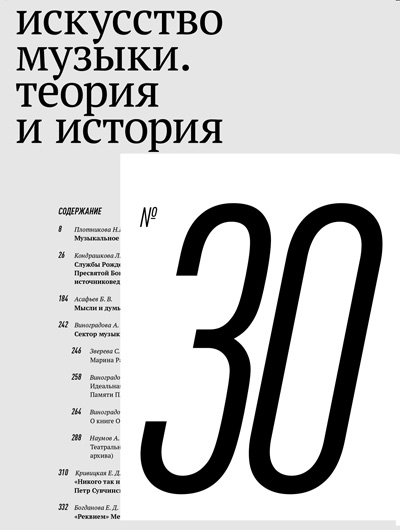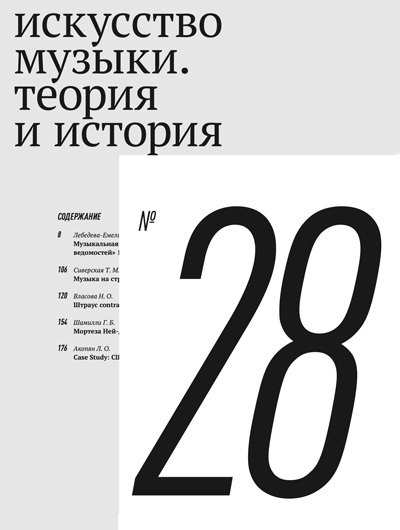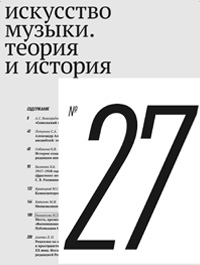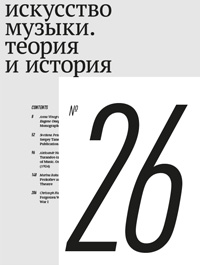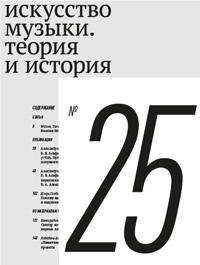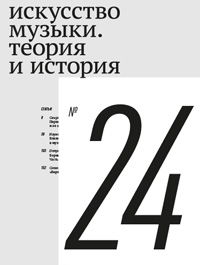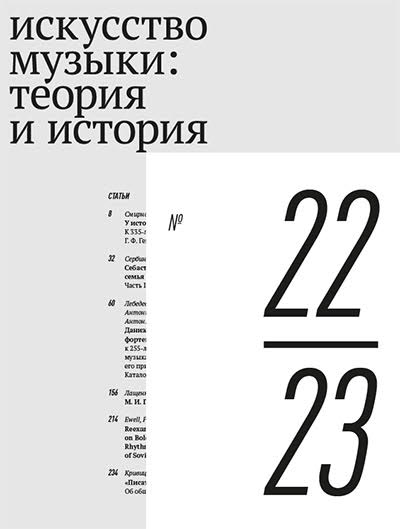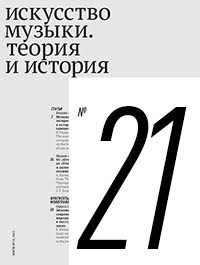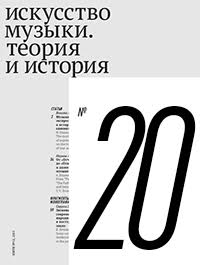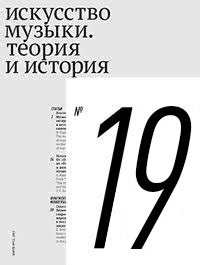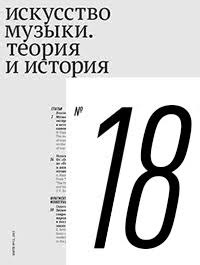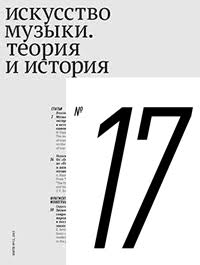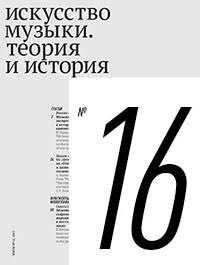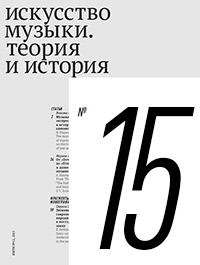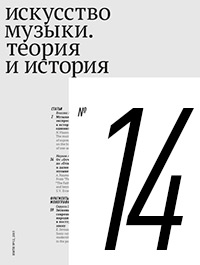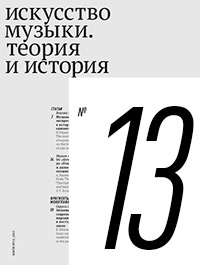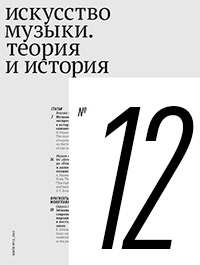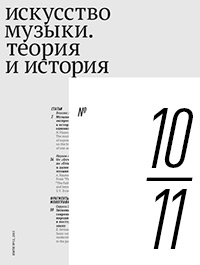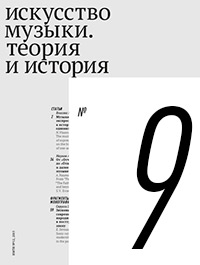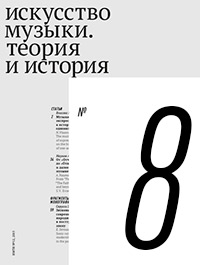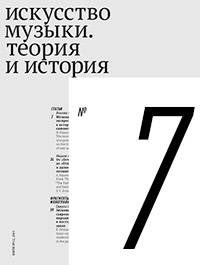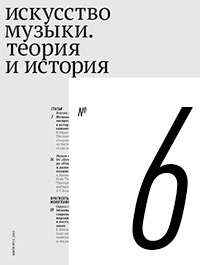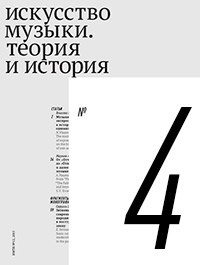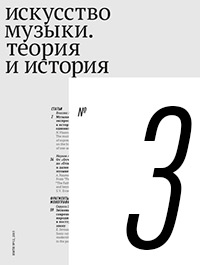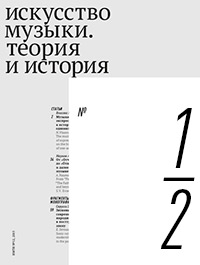2019 № 20
The three-thousand-year-old history of Indian music culture is unique owing not only to its long-term continuous existence but also to its faithful observance of traditions. A study of Gandharva Sangita (6th—5th centuries B. C. — 2nd—3rd centuries A. D.) — the ‘high’ music that has become a theoretical basis for Rag Sangit (the raga-based music), which is thriving in our time — provides a possibility to penetrate to the depths of this ancient, thoroughly elaborated musical system and to comprehend the essence of the logically substantiated, organic evolution towards the next phase of the historical development of Indian music. The materials pertaining to that remote epoch have not been sufficiently studied due to a limited availability of treatises and the specificity of their texts. In particular, the notations of stage songs, found in the treatises and done with the help of the original Svara Lipi system (Devanagari alphasyllabary), still remain all but unexplored. Several examples in original notation and in my ‘translation’ to European notation are published in the present article.
Among numerous rarities stored in the Manuscript Office of the Russian Institute for Art History and related to the history of Russian music, there is a rare photograph from a little known oil painting depicting the choristers of the Court Chapel, led by its director Aleksey (Alexis) Fëdorovich L’vov (1798–1870), in the presence of numerous listeners, among whom Pauline Viardot-Garcia is particularly notable. A detailed investigation of this photograph enabled us to identify several persons depicted in the concert hall, as well as to discover the original painting in the collection of the State Museum of the History of St. Petersburg and to clarify some points related to the history of the painting during the twentieth century.
The article deals with Rossini’s four opere semiserie — L’inganno felice (1812), Torvaldo e Dorliska (1815), La Gazza Ladra (1817) and Matilde di Shabran ossia Belezza e Cuor di Ferro (1821). Their genre and structural features are analyzed in detail. A special objective is to examine La Gazza Ladra as a classic example of opera semiseria and to demonstrate the impact made by it on the formation of the genre canon.
The article’s subject matter is the reception of Giacomo Puccini’s La Bohème in Russia — from the 1897 Russian première realized by Savva Mamontov’s private opera to the Bolshoy Theatre production of 2018. The Russian interpretations of La Bohème have their specific traits conditioned both by the peculiarities of the national character and by the attitude towards the social status of ‘bohemians’ (in Soviet times such people were referred to as ‘artistic intelligentsia’). The characteristic features of the opera’s Russian stagings include the striving to impart more spirituality to the bohemians’ frivolous mode of life and to highlight the anti-bourgeois pathos in their behaviour and in their life conditions. Typically for Russian stagings, Mimi is shown as a tragically doomed heroine, and the parts of both Mimi and Rodolfo are treated in an emphasizedly serene, lyrical mode. These and other features of the Russian La Bohème are discussed in the present article.
Due to the reform of the Russian secondary school conceived by D. A. Tolstoy and M. N. Katkov, the Russian society began to pay more attention to the problems of musical education. Music was assigned a crucial role in rearing the young people’s aesthetic sensibility, especially through the lessons of singing as the most democratic form of musical tuition. In the present article, the measures directed towards the realization of this task are listed; the statistics of the growth of public, departmental and private female schools and gymnasia are given. A. V. Nikol’sky’s role in the formation of the women’s musical education is described. The archival data concerning the teachers of sacred and secular singing in the Moscow schools and privileged educational institutes are cited. Nikol’sky’s ‘Programme of singing for the Moscow municipal primary colleges’ is characterized. The conclusion runs: on the eve of the October coup d’état, the general musical education in Russia was on an unusually high level, and women not only became firmly established in choral groups, but also began to direct church choirs.
The present publication of the catalogue of materials from the Russian-language Belgrade newspaper Novoe vremya (‘New Time’) of 1925 continues the project ‘Writing on Music in Russian Diaspora: an Annotated Catalogue of Articles Published by Russian-Language Press Abroad’.
The catalogue embraces the entire available information on Stepan Anikievich Degtyarev’s church concertos. Links to the editions of his newly discovered works, to audio and video recordings, as well as to bibliographical materials are provided. Each work is described in detail; the incipits of all concertos are given.
